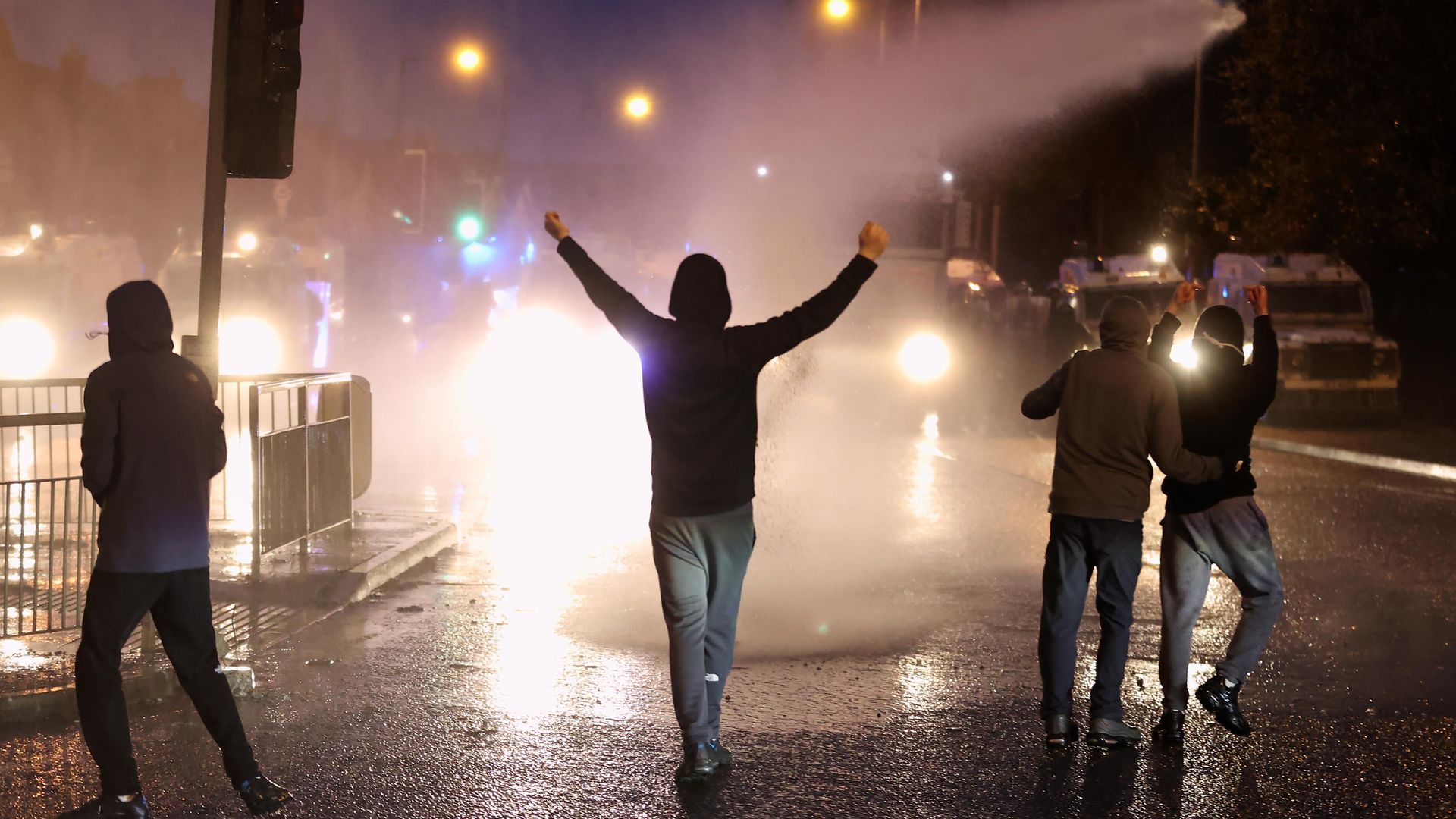
Northern Ireland is still a peacemaking success story. But 23 years after Good Friday Agreement, the region should be further towards reconciliation and social justice
There is no mystery about the grassroots unionist anger that has led to street violence in Northern Ireland in recent weeks. Telling communities to be angry has been the political strategy of unionist leaders for decades.
The immediate cause of the unrest was the decision not to seek prosecutions of Sinn Féin representatives for pandemic regulation breaches at a major republican funeral last June.
Rather than waiting for reviews of the actions of the police and Public Prosecution Service to run their course, unionist parties claimed that the leadership of Northern Ireland’s police force was biased in favour of republicans and had “lost the confidence of the unionist community”. Rioting against the police began in working-class unionist, or “loyalist”, areas. Unionist politicians condemned the unrest but took to the airwaves to “explain” the frustration of the teenage rioters.
All this occurred amid “rising community tensions” in unionist areas since Brexit came into force at the beginning of the year. Unionist leaders were also eager to warn about these tensions, even though they stem directly from the rollercoaster Brexit policy pursued by the Democratic Unionist Party (DUP).
The party opted to campaign for Brexit despite the potential implications of a Leave result. After the referendum, the party supported the hardest of Brexits and opposed the “backstop” which was designed to stabilise Northern Ireland. It then placed its trust in Boris Johnson, only to be betrayed when the prime minister agreed to establish an effective border in the Irish Sea between Northern Ireland and the rest of the UK to secure a Brexit deal with the EU. The DUP appeared to be open to the opportunities of the Northern Ireland Protocol before deciding it was actually an unprecedented threat to unionism which could and should be scrapped.
Alongside Brexit was a three-year stand-off over legislation to promote the Irish language which ended in a predictable compromise. Further back were the 2012-13 “flag protests” when the unionist parties roused months of futile street protests against a democratic decision by Belfast City Council to fly the unionist flag at City Hall only on designated days. In fact, current grassroots anger is ultimately a legacy of the DUP’s long campaign against the 1998 Good Friday Agreement.
The party spent years inflaming unionist anxieties, cultivating the trope that Northern Ireland had become a “cold house for unionists” in order to defeat the moderate Ulster Unionist Party (UUP) at the polls. The DUP achieved this in 2003, accepted the Good Friday Agreement in virtually all its parts in 2006, and entered government with Sinn Féin in 2007. Ian Paisley, the then DUP leader, had told a crowd in July 2006 that this would happen “over our dead bodies”.
No wonder unionists are disoriented. Political unionism has put its constituency through a cycle of protest and poorly explained agreement. The unionist grassroots have been offered incoherent strategy and impossible expectations, while social deprivation and paramilitary power continue.
Another kind of leadership was, and is, possible, one that would steer the movement into the realities of contemporary Northern Ireland. Northern Ireland is a divided society that must be governed in partnership with others. Irish and European dimensions to politics and society do matter to many people, and the union is secure – or was – until Brexit. Some unionist figures grasp this, but they are exceptions.
Unionists, at all levels, also need an accurate sense of their political strength. A recent article by political scientist Niall Ó Dochartaigh shows how Northern Ireland has, since 2017, entered a dramatically new and under-acknowledged political era. There is still a pro-union majority among the public but a non-unionist majority in the Northern Ireland Assembly – a majority of members who are socially liberal, pro-EU and in favour of closer ties with the Republic. The unionist parties’ current stances on policing and on Brexit leave them isolated, and could push moderate pro-union voters towards the Alliance Party and Greens in the next assembly election.
Meanwhile, Sinn Féin is also on the back foot. The reckless funeral episode and the equivocating apology that followed caused anger across the North. This does nothing for Sinn Féin’s ongoing project of stoking the debate on a united Ireland, since a united Ireland, inevitably, is closely associated with the personality of that party. Republicans also face a renewed SDLP. Overall, the middle ground, already growing, could be strengthened by this crisis.
Northern Ireland is still a peacemaking success story. But 23 years after Good Friday Agreement, the region should be further towards reconciliation and social justice. No single actor is responsible for this but the current events spotlight unionism and its relentless message of fear. Until that message changes, political disagreements will always be at risk of spilling onto the streets.
David Mitchell is an Assistant Professor in Conflict Resolution and Reconciliation at Trinity College Dublin. This article first appeared at theconversation.com
Warning: Illegal string offset 'link_id' in /mnt/storage/stage/www/wp-includes/bookmark.php on line 357
Notice: Trying to get property 'link_id' of non-object in /mnt/storage/stage/www/wp-includes/bookmark.php on line 37






